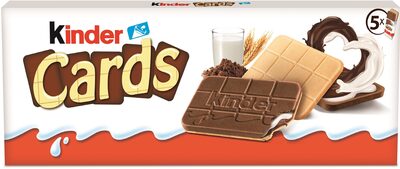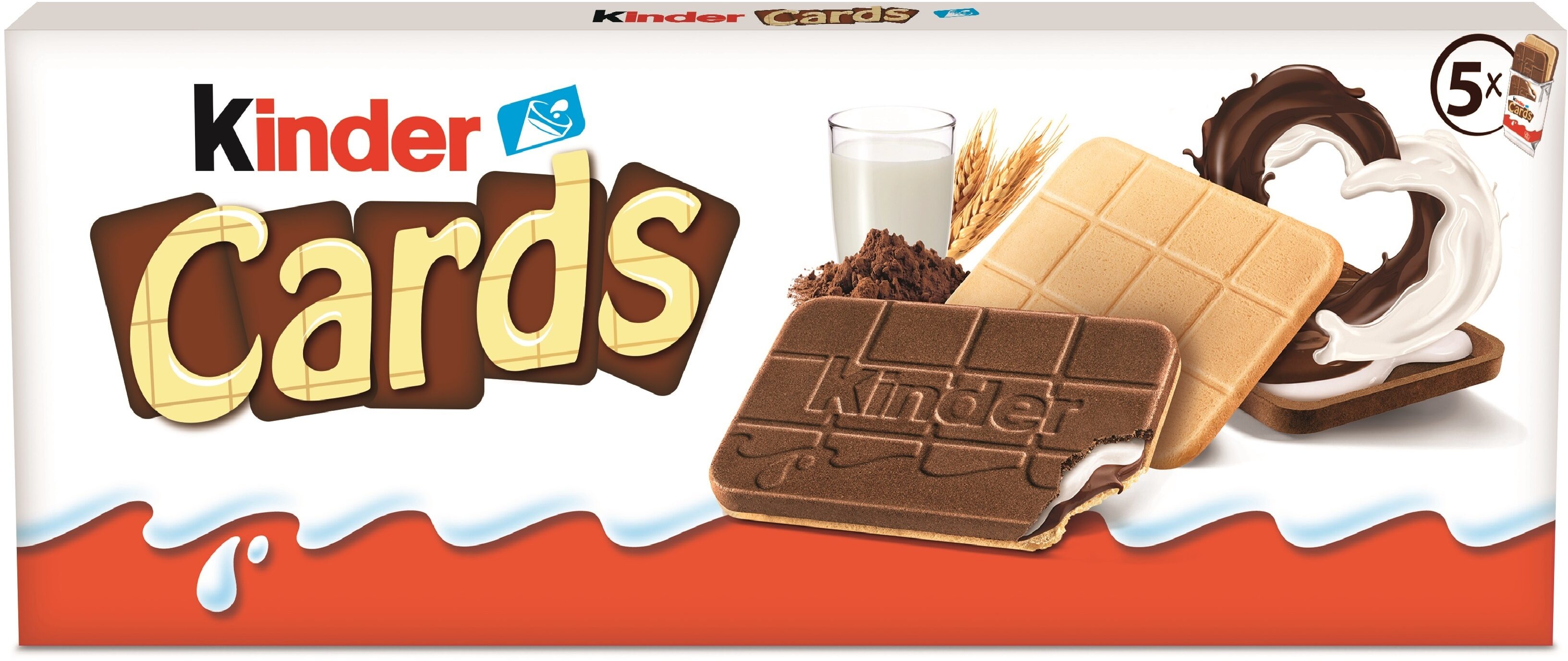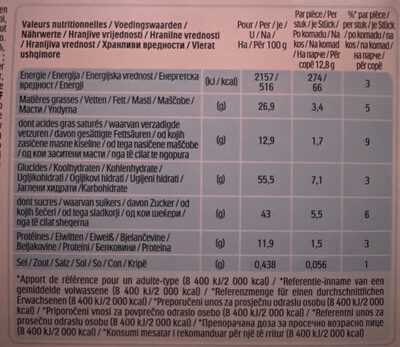Kinder - Cards 10 Biscuits, 128g (4.6oz)
This product page is not complete. You can help to complete it by editing it and adding more data from the photos we have, or by taking more photos using the app for Android or iPhone/iPad. Thank you!
×
Some of the data for this product has been provided directly by the manufacturer FERRERO FRANCE COMMERCIALE.
Barcode: 8000500269169 (EAN / EAN-13)
Allgemengen Numm:: Gaufrettes croustillantes avec fourrage au lait et au cacao.
Quantitéit: 128g
Verpackungsart:
en:Autres plastiques, en:Bar, en:Carton, en:Carton non ondulé, en:Green Dot, en:Papier cartonné, en:Plastique, en:Stück
Kategorien: en:Snacks, en:Sweet snacks, en:Biscuits and cakes, en:Biscuits, en:Chocolate biscuits, en:Wafers, en:Stuffed wafers, en:Chocolate stuffed wafers
Labelen, Zertifizéierungen, Auszeechnungen: en:No preservatives, en:Made in the EU, en:No colorings, en:No dyes or preservatives, en:Punto Verde, en:Senza coloranti, en:Senza conservanti, en:Verified
Link to the product page on the official site of the producer: https://www.kinder.com/de/de/kinder-card...
Geschäfter: K-market, Coop, carrefour.fr, Hofer
Country: Belsch, Finnland, Frankräich, Däitschland, Ungarn, Italien, Lëtzebuerg (Land), Rumänien, Spuenien, Schweden, Schwäiz
Matching with your preferences
Environment
Carbon footprint
Verpackungsart
Transportation
Threatened species
Other information
Conservation conditions: A conserver au sec et à l'abri de la chaleur
Customer service: FERRERO FRANCE COMMERCIALE - Service Consommateurs, CS 90058 - 76136 MONT SAINT AIGNAN Cedex
Report a problem
Data sources
The manufacturer FERRERO FRANCE COMMERCIALE uses Equadis to automatically transmit data and photos for its products.
Product added on vun kiliweb
Last edit of product page on vun org-ferrero-france-commerciale.
Produkt Säit och geännert vun anticultist, beniben, chevalstar, date-limite-app, driveoff, ecoscore-impact-estimator, feat, fffood, flor0, foodless, fringillus, g123k, halal-app-chakib, inf, jumati, justine-inrae, ks, moon-rabbit, off.051f2dd4-e28f-404f-b483-0c9a12d9f640, off.3ec288e57042822487493080cb8813ce, openfoodfacts-contributors, packbot, pasthor, prepperapp, quechoisir, roboto-app, rochus, scanbot, schlag, sebleouf, smoothie-app, stivolonski, thaialagata, vaiton, yuka.UW9vNkFLMGFnc0JRcS9jQjJCMzg1dXhvL01LeEFUeTRkdU1mSWc9PQ, yuka.sY2b0xO6T85zoF3NwEKvlkoXf-LS8j74Nwf4ml2H49ypDoDXX_xt45LzH6s.










